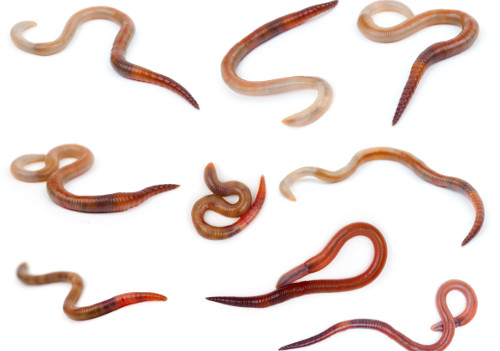Red Wiggler Worms - Reliable Decomposers for Your Compost Container
Red Wiggler Worms - Reliable Decomposers for Your Compost Container
Blog Article
Optimizing the Benefits of Red Wiggler Worms: A Comprehensive Guidebook for Home Gardeners and Urban Farmers
In the world of sustainable horticulture techniques, red wiggler worms stand as unhonored heroes, silently changing natural waste right into nutrient-rich spreadings that can work wonders for dirt health and wellness. By checking out the ins and outs of just how to successfully care for and maximize the benefits of red wiggler worms, people can open a riches of chances for enhancing the sustainability and efficiency of their gardening endeavors.
Comprehending Red Wiggler Worms
Red Wiggler worms, renowned for their effective composting abilities, are a varieties of earthworms commonly utilized in vermiculture practices. These worms, medically recognized as Eisenia fetida, grow in rotting natural product, making them perfect prospects for composting.
One key feature of Red Wiggler worms is their reproductive price. These hermaphroditic creatures have both female and male reproductive body organs, allowing them to reproduce rapidly under desirable problems. A fully grown Red Wiggler can generate multiple children in a brief duration, ensuring a consistent population within a composting system.

Establishing a Worm Bin
When establishing a worm container for vermiculture functions, correct preparation and interest to detail are necessary for developing a helpful environment for Red Wiggler worms. Begin by choosing a suitable container for your worm container.

Place the worm bin in a cool, dark location away from direct sunlight and extreme temperatures. By following these steps, you can set up a growing worm container that will efficiently refine natural waste into nutrient-rich vermicompost for your garden.
Feeding and Maintaining Worms
Guaranteeing a well balanced and nourishing diet regimen is crucial for the health and productivity of Red Wiggler worms in a vermiculture system. It is vital to avoid feeding them citrus fruits, onions, garlic, milk items, meat, and oily foods as these can be harmful to the worms or cause unpleasant smells in the bin.
Appropriate moisture levels are likewise important for the well-being of Red Wiggler worms. The bedding ought to seem like a moist sponge, supplying sufficient dampness for the worms to take a breath with their skin. Regularly examine the dampness degrees and change by adding water or dry bedding material as required. Additionally, preserving appropriate temperature problems between 55-77 ° F(13-25 ° C )will make certain optimum worm task and recreation. By carefully checking their diet, moisture, and environmental conditions, home garden enthusiasts and city farmers can sustain a efficient and healthy Red Wiggler worm populace for composting purposes.
Harvesting Worm Castings
To efficiently extract nutrient-rich worm castings from the vermicompost, an organized harvesting process is essential for optimizing the composting advantages. The initial step in collecting worm spreadings is to urge the worms to migrate to one side of the bin.
After the spreadings have been harvested, it is essential to separate any continuing to be worms from the castings to stay clear of hurting them check out this site throughout storage or application. One effective technique is to develop conical piles of castings under brilliant light. Worms will instinctively relocate far from the light, allowing for very easy separation and removal.
Finally, the harvested worm castings need to be saved in a great, dark, and dry location to keep their top quality and performance as a nutrient-rich dirt amendment. By adhering to these actions, home garden enthusiasts and urban farmers can optimize the advantages of red wiggler worms in their vermicomposting systems.
Making Use Of Worm Castings in Gardening
The incorporation of nutrient-rich worm spreadings into yard soil can substantially boost plant development and general dirt health and wellness. Worm castings, likewise known why not try these out as vermicast, are a natural plant food generated by red wiggler worms as they damage down raw material. These castings are abundant in essential nutrients like nitrogen, phosphorus, potassium, and useful microorganisms that advertise plant growth and boost dirt framework.
When using worm spreadings in gardening, it is important to blend them completely into the dirt or utilize them as a top dressing around plants. The slow-release nature of worm spreadings makes certain a consistent supply of nutrients to plants with time, reducing the threat of nutrient leaching and promoting long-lasting dirt fertility. Additionally, worm here castings assist enhance dirt aeration, water retention, and microbial task, creating a healthy and balanced setting for plant origins to prosper.

Final Thought
In final thought, the use of red wiggler worms in home horticulture and metropolitan farming can considerably benefit soil health and plant development. By recognizing how to establish up and keep a worm container, feed the worms appropriately, and harvest their nutrient-rich spreadings, garden enthusiasts can optimize the benefits of these earthworms.
In the realm of sustainable horticulture practices, red wiggler worms stand as unsung heroes, quietly changing natural waste into nutrient-rich spreadings that can function marvels for dirt health and wellness.When establishing a worm bin for vermiculture functions, proper preparation and interest to information are crucial for producing a favorable setting for Red Wiggler worms. The very first step in gathering worm castings is to motivate the worms to move to one side of the bin. Worm castings, likewise recognized as vermicast, are a natural fertilizer generated by red wiggler worms as they break down natural issue. By recognizing just how to establish up and maintain a worm container, feed the worms appropriately, and collect their nutrient-rich spreadings, gardeners can take full advantage of the benefits of these earthworms.
Report this page